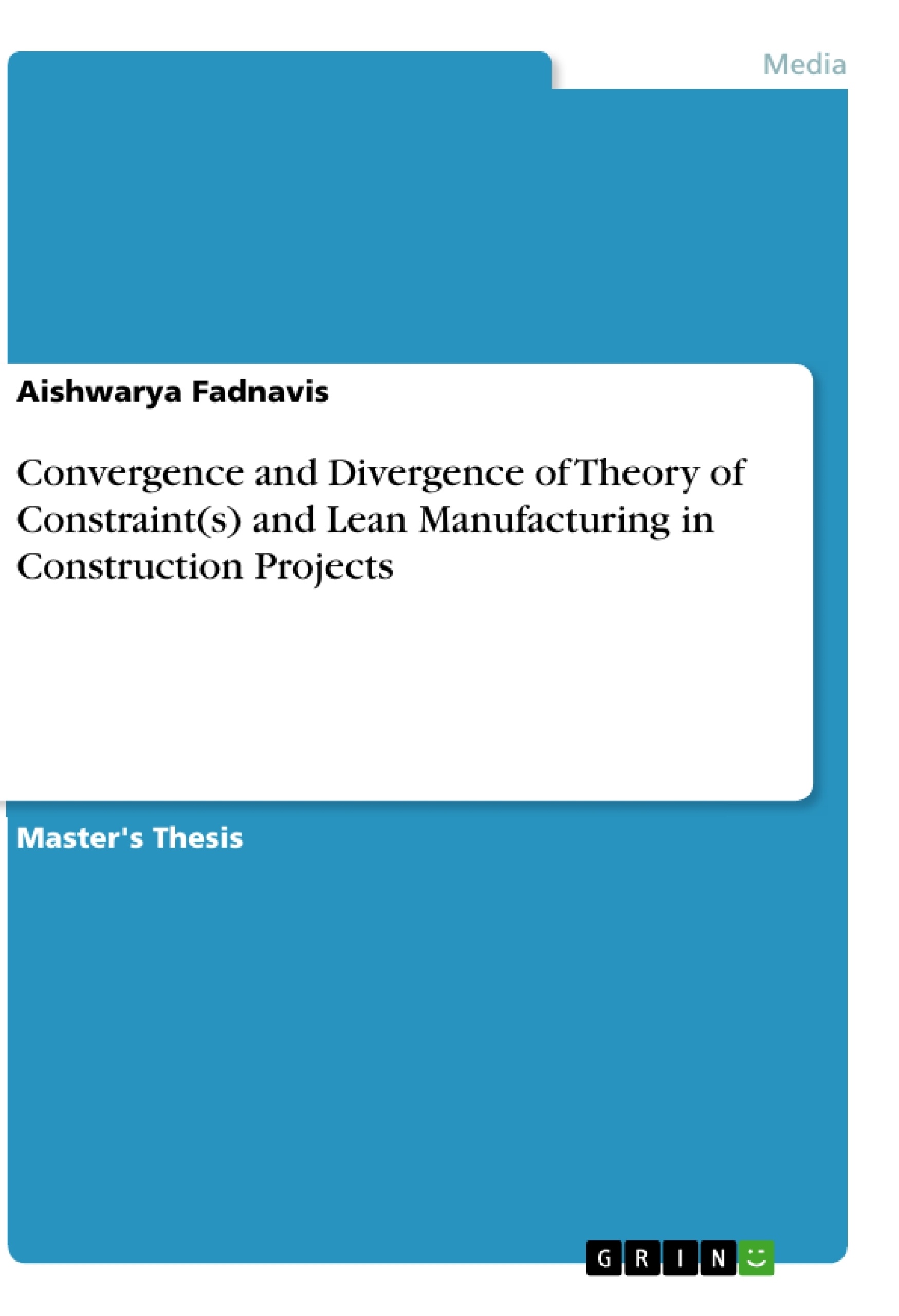The purpose of the study is to provide effectively managed constraints by defining constraints that prevent their targets and thus to increase the profitability of firms.
Identifying and removing constraints from bottleneck activities help to reduce uncertainties in construction processes and increases the transparency of project management. Various continuous improvement (CI) strategies have been developed and applied to improve manufacturing system performance. This paper studies the combination of two distinct strategies, Lean Manufacturing (LM) and Theory of Constraint(s) (TOC), for improving manufacturing system performance. The research includes reviews of these two methodologies and the implementation process involved in each strategy. Examination of the possibilities to improve manufacturing system performance through integration of these two strategies. The effectiveness of the integrated approach along with an examination of different factors, recommendations, and presentation of best possible management practices for the application of this integrated approach. In an organization, there are attempts to achieve multiple projects with common, shared resources; the work can be challenging. Managers might find themselves on project overload with continual resource shortages and difficulty in determining the most important tasks.
The focus of the research is on the elimination of non-value added activities through an application of a management philosophy that identifies and eliminates the waste from each step in the production throughout the Value Stream. A comparative analysis is carried out through reviews and studies regarding Lean Process and TOC- application to determine the manager’s potential benefits like reduced production lead-time and lesser work-in-process inventory.
Inhaltsverzeichnis (Table of Contents)
- Chapter 1 Introduction
- 1.1. General Background to Study
- 1.1.1. The gap in Knowledge/ Statement of the problem
- 1.2. Justification for Study
- 1.3. Research Aims and Objectives
- 1.4. Research Hypothesis
- 1.5. Research Questions
- 1.6. Research Methodology and Ethical considerations
- 1.6.1. Research Methodology
- 1.6.2. Ethical Consideration
- 1.7. Research Contribution to both Academic Knowledge and Industry
- 1.7.1. Research Contribution to Academic Knowledge
- 1.7.2. Research contribution to Construction Industry
- 1.8. Scope and Limitations of Study
- 1.9. Chapter outline
- Chapter 2 - Literature Review: Identification of the Constraint(s) in Construction projects
- 2.1. Identifying the constraint(s) through TOC
- 2.1.1. New Approach to Project Management
- 2.2. Identifying wastes through Lean Manufacturing
- 2.2.1. Communication and Management support
- 2.2.2. The value in Lean Construction: a systematic approach
- 2.3. TOC and Lean Manufacturing- Comparison
- 2.4. The Potential and Limitations of the TOC and Lean manufacturing
- Chapter 3 - Literature Review: Application of TOC and Lean Manufacturing to mitigate the constraint(s)
- 3.1. The Constraint-based Approach
- 3.1.1. The methodology of TOC Application
- 3.1.2. Implementation of Lean process
- 3.3. Integrating TOC and Lean practices
- 3.3.1. Factors Affected by Combining TOC Application and Lean Process
- 3.4. Achieving TOC- Lean Application
- 3.4.1. Differing Tools and Objectives
- 3.4.2. The Value Stream, Flow, Push and Pull Manufacturing
- 3.5. The Potential and Limitations of Integration of TOC and Lean manufacturing
- Chapter 4 - Methodology
- 4.1. Literature Review
- 4.2. Qualitative Methodology
- 4.2.1. Semi-structured Interviews
- 4.2.2. Cognitive Mapping Technique
- 4.3. Risks of Quantitative Studies
- 4.4. Case Studies Research
- 4.4.1. Data Collection and Gathering Evidence
- 4.5. The qualitative process: From Research Questions to Analysis
- Chapter 5- Case studies: The Construction Manufacturing Industry
- 5.1. Application of Lean Manufacturing through Constrained Management
- 5.1.1. Cultural readiness and network relationship- Company 'A'
Zielsetzung und Themenschwerpunkte (Objectives and Key Themes)
This research aims to investigate the integration of Lean Manufacturing (LM) and Theory of Constraint(s) (TOC) for improving manufacturing system performance in construction projects. It examines the application of these strategies, their potential benefits, and the factors that influence their successful implementation. The focus is on identifying and removing constraints from bottleneck activities to increase efficiency, reduce uncertainties, and improve the transparency of project management.
- Identifying constraints in construction projects using TOC and LM.
- Analyzing the benefits and limitations of integrating TOC and LM in construction.
- Exploring the factors that affect the successful implementation of the integrated approach.
- Developing best practices for managing constraints and reducing waste in construction projects.
- Contributing to both academic knowledge and industry practice by providing insights into the effectiveness of integrated TOC and LM.
Zusammenfassung der Kapitel (Chapter Summaries)
- Chapter 1: This chapter sets the context for the research by introducing the problem of constraints in construction projects and highlighting the gap in knowledge regarding the integration of TOC and LM. It outlines the research aims, objectives, methodology, and scope of the study.
- Chapter 2: This chapter reviews existing literature on TOC and LM in construction, focusing on how these strategies can be used to identify and address constraints. It examines the benefits and limitations of each approach and provides a comparative analysis of their application.
- Chapter 3: This chapter delves into the application of TOC and LM in mitigating constraints in construction projects. It explores the methodology of each strategy, the factors influencing their integration, and the potential benefits of combining these practices.
- Chapter 4: This chapter outlines the research methodology employed in the study. It details the qualitative data collection methods, including semi-structured interviews and cognitive mapping techniques, as well as the case study approach used to gather evidence.
- Chapter 5: This chapter presents case studies from the construction manufacturing industry to illustrate the application of Lean Manufacturing through constrained management. It explores the importance of cultural readiness and network relationships in successful implementation.
Schlüsselwörter (Keywords)
The key terms and concepts explored in this research include: Theory of Constraint(s) (TOC), Lean Manufacturing (LM), construction projects, constraints, bottleneck activities, waste reduction, continuous improvement, value stream analysis, project management, efficiency, transparency, integrated approach, case studies, cultural readiness, and network relationships.
- Quote paper
- Aishwarya Fadnavis (Author), 2018, Convergence and Divergence of Theory of Constraint(s) and Lean Manufacturing in Construction Projects, Munich, GRIN Verlag, https://www.grin.com/document/934138



